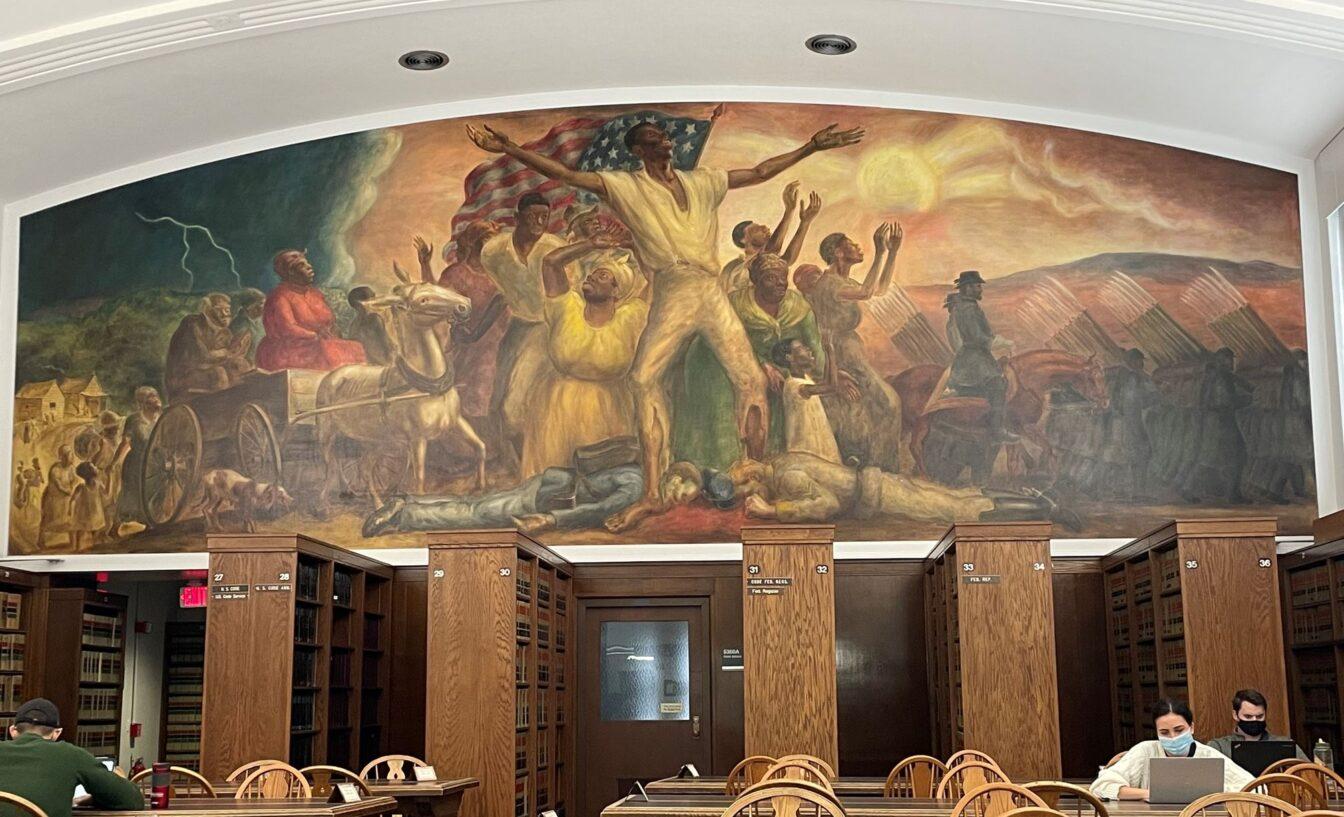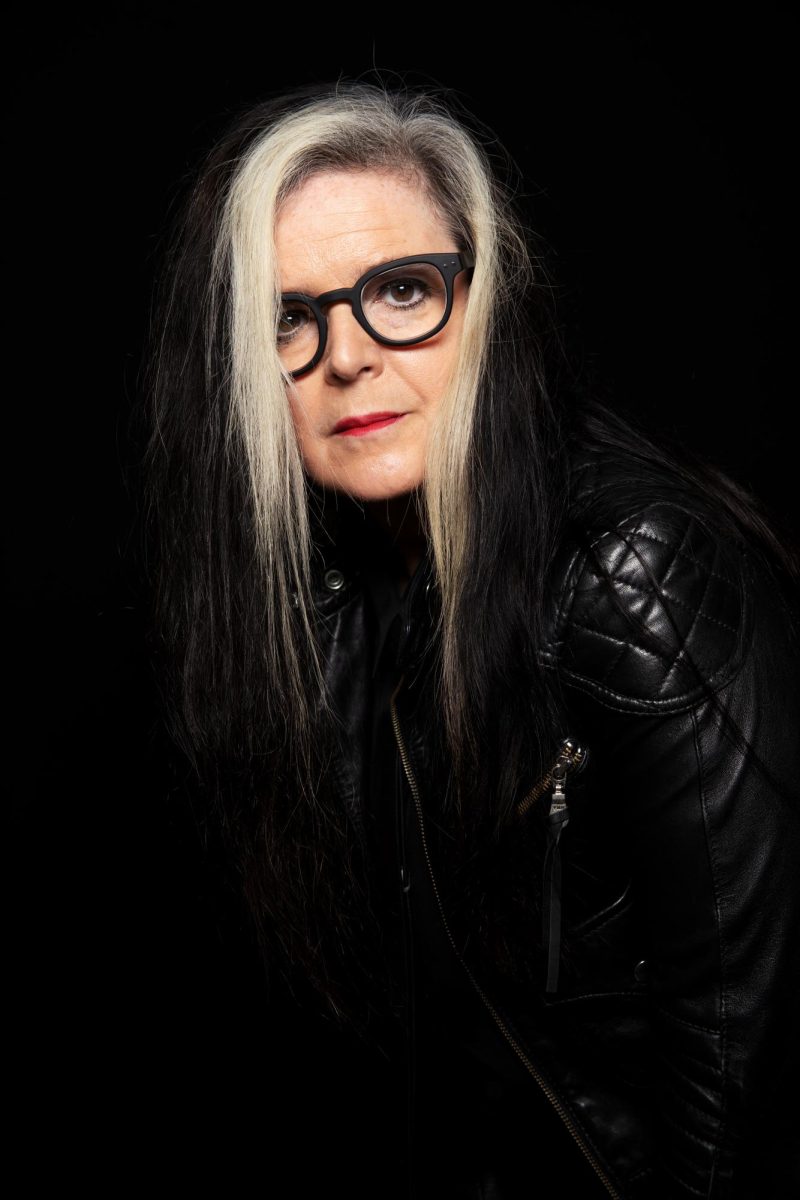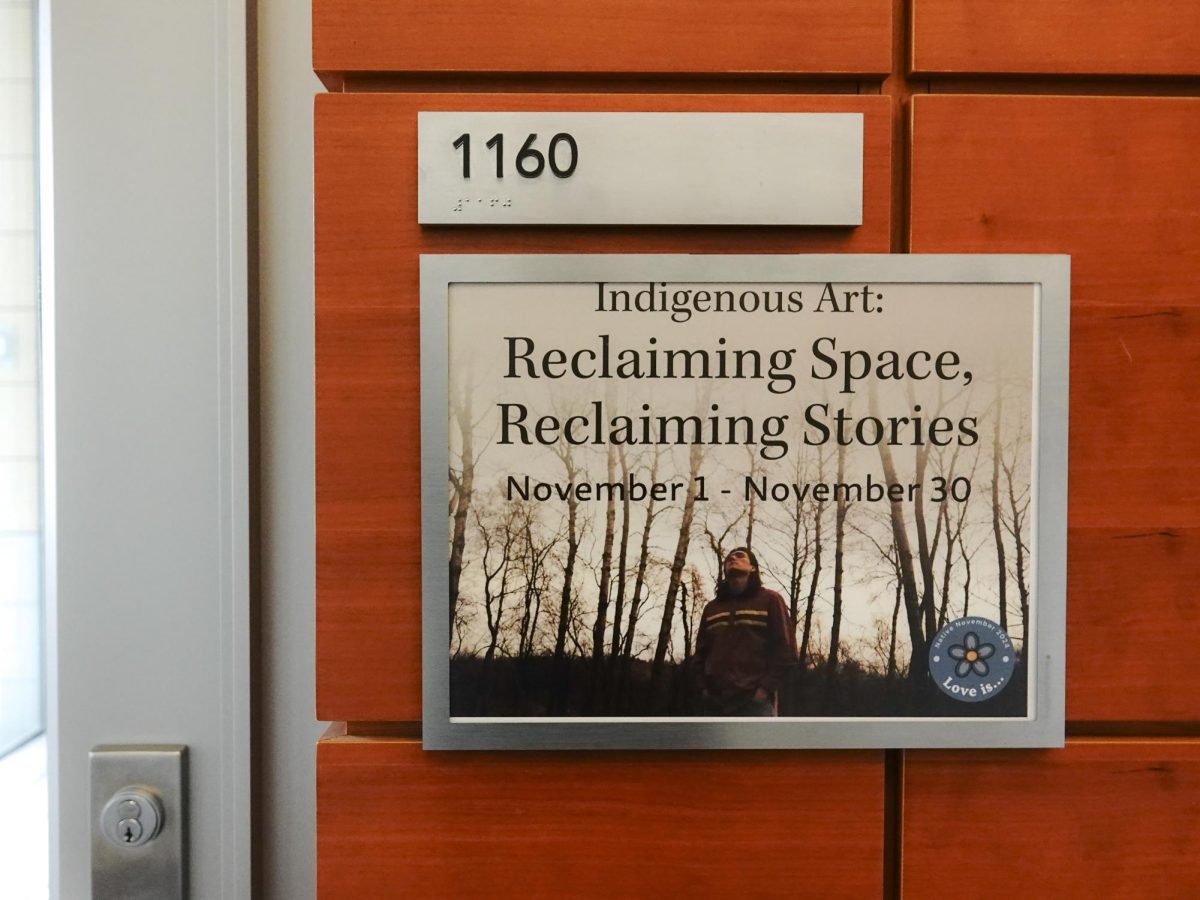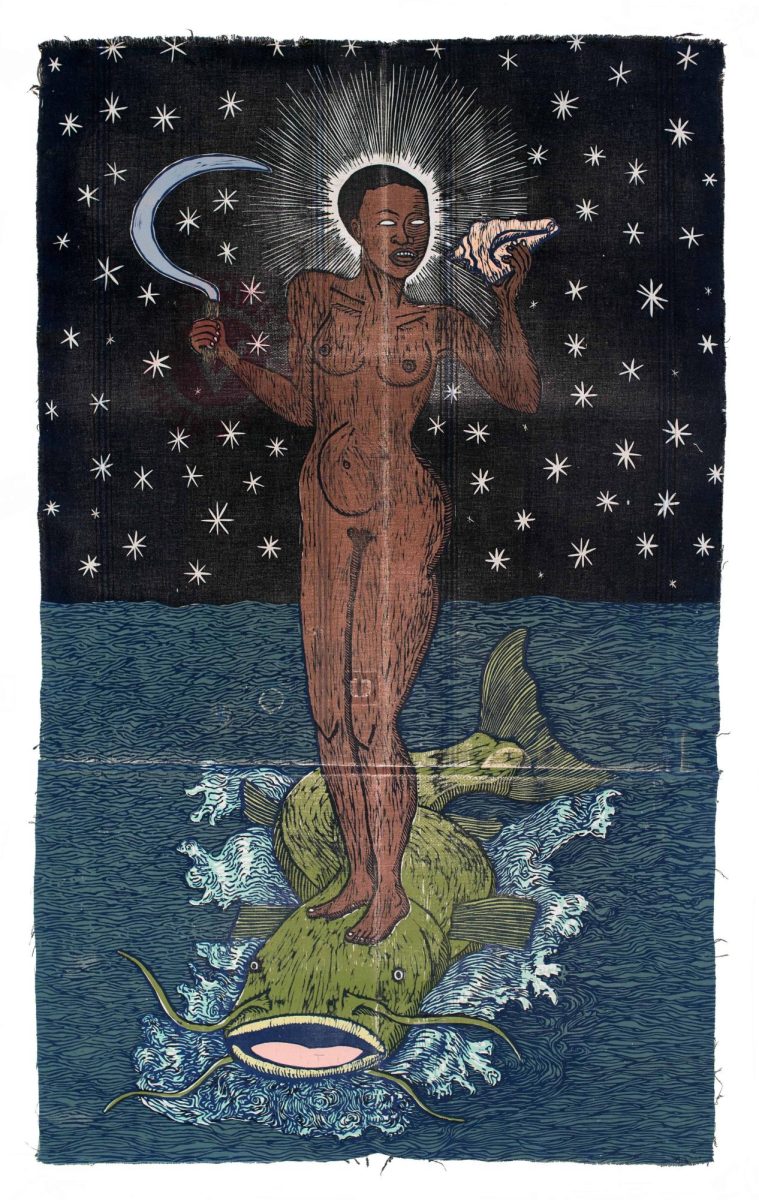During the Great Depression, John Steuart Curry was commissioned by the federal government to design and produce a mural for the Department of Justice in Washington, D.C. While his design was rejected for the subject matter being too controversial, a modified version of the original proposal can now be found on the University of Wisconsin campus in the Law Building reading room.
At 37 feet wide by 12 feet tall, this mural is still a grand scale fit for D.C. Completed in 1942, it has since become a staple of campus — a distinct mural in Wisconsin and the largest of multiple pieces of art by Curry in Madison.
Curry is famous for his paintings depicting the Midwest, and for his style of bold brushwork and free formed figures. Freeing of the Slaves is in Curry’s recognizable style and is a great example of his pictorial storytelling skill. The story starts on the left side of the mural, under a dark and stormy sky. Former slaves are quitting the slaves’ quarters and heading toward the center and foreground of the mural.
There, in the center of the piece, is the climax of the story — a freed Black man spreading his arms in rejoice, surrounded by other celebrating freed slaves with their hands in the air. Behind them waves the Union flag. This caravan follows behind the Union army, who marches under clear skies on the right side, keeping the constant movement of the mural.
‘The Lighthouse’ immerses audiences in another world with unparalleled filmmaking
As an eye follows this movement, they also witness a contrast of color between the dark storm on the left and the sun breaking through on the right, presumably representing the turbid past and the great hope for the future. The form also offers a contrast from left to right. While the caravan of freed slaves contains a variety of figures in tattered clothes and disorderly procession, the soldiers on the right are rigid, matching and marching, bayonets shining in the sun.
Another powerful part of the painting is not only the celebratory central figures, but also the fact that they stand over two dead bodies of a Union solider and a Confederate solider.
The new Batman: What to expect of Pattinson’s portrayal of iconic Gotham vigilante
Their corpses are rigid on the ground. This aspect of the mural stops the viewer from becoming too blithe and reminds them of the great sacrifice and pain that surrounds the mural. This striking central composition is also seen in Curry’s equally praised, and equally controversial, mural of John Brown called Tragic Prelude.
Next time you are in the reading room, take a new look at this mural and appreciate the complexities that John Steuart Curry represented and other rural Midwest scenes.














